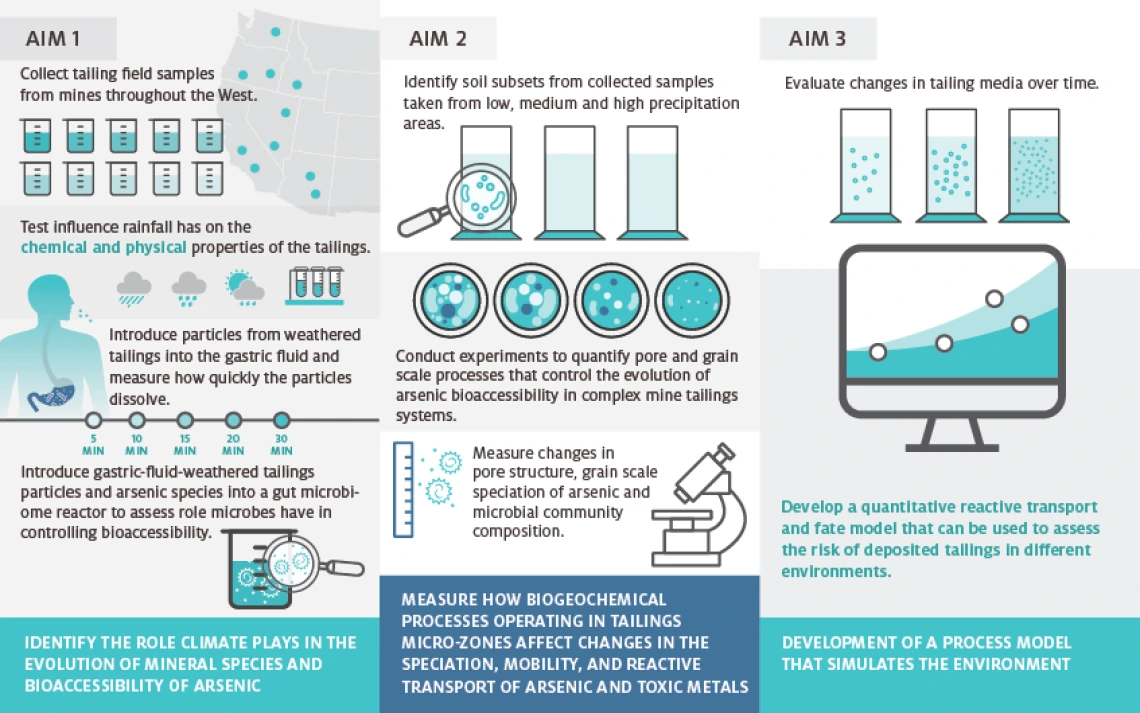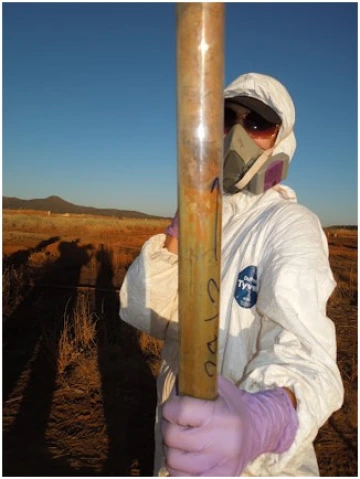
Project Leaders
Mark L Brusseau
Co-Investigator
Summary

Legacy mine tailings are a primary source of arsenic and toxic metal exposure to proximal communities throughout the semi-arid Southwest. Because they are geochemically unstable under Earth surface conditions, tailings begin to undergo weathering transformations that lead to changes in the molecular form or "speciation" of toxic metal(loid)s immediately upon their deposition. Weathering reactions, which are driven by meteoric inputs of water and gases, are manifest as a "reaction front" or a transition zone from highly weathered to unweathered tailings with increasing depth below the surface. The rate of the reaction front propagation and the types of reaction products formed depend on climate and tailings mineral composition. The weathering-induced transformations of arsenic, lead, and zinc alter their bioavailability, yielding particles that can be more or less toxic than the primary tailings particles when ingested or inhaled. Although climate and tailings lithology control the weathering rate, the weathering process itself occurs at the grain scale, where fluid-filled pores, sometimes in close proximity to each other, may exhibit sharp gradients in chemical composition and concentration. The transport and reactions that occur at this pore- to core-scale must be understood mechanistically to better predict the diagenetic alteration of tailings and contaminant bioavailability as a function of climate and to enhance capacity for accurate risk assessments and effective remedial approaches. The researchers are evaluating the weathering processes underway at 10 federal Superfund sites spanning a wide range in climate, where human health risk is primarily associated with elevated arsenic concentrations in sulfide-ore derived tailings media.
Cores are being collected from each of the sites as a function of depth and transported to the laboratory for detailed characterization of physical, mineralogical, microbial, and geochemical composition. Depth-dependent weathering trends and reaction fronts are being determined. These bulk reaction fronts and transformations are being correlated with alterations in arsenic, lead, and zinc molecular speciation and bioaccessibility. A subset of the extracted cores, representing distinct pathways of metal(loid) transformation, are being utilized in instrumented column experiments conducted in the laboratory under controlled conditions. Columns are being subjected to detailed studies of the evolution over the course of the experiment of pore-structure, metal(loid) speciation, and associated bioaccessibility. These experiments, which comprise solution samplers as a function of length along the column, enable the collection of a reactive transport dataset to identify the biogeochemical reactions controlling metal(loid) transformation under different conditions. The data generated will be used to implement a reactive transport and fate model of tailings diagenesis that will serve as a predictive tool for assessment of health risk associated with tailings deposition under differing climatic scenarios.


